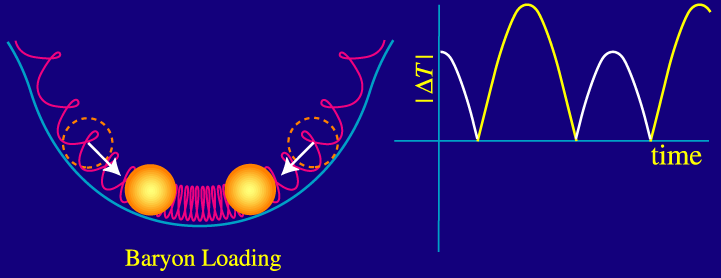
Now let's add the potential wells back into the picture. The picture is only slightly more complicated.
If the baryons contribute a negligible amount of mass to the plasma, the CMB temperature at the bottom of the potential well oscillates symmetrically around zero. The temporal behavior of the temperature is illustrated on the right:

With more baryons in the system, the plasma is loaded down. The plasma compresses further inside the potential well before pressure can reverse the motion. The oscillation is now asymmetric in that the extrema that represent compressions inside potential wells are increased over those that represent rarefactions:

The power spectrum doesn't care about the sign and so take the absolute value of the temperature fluctuation. Now we see that the first and third peaks are enhanced over the second peak. We shall see next that this fact is indeed reflected in the power spectrum of the anisotropies.
